Customize Your iPhone Alarm: Download Your Favorite Songs
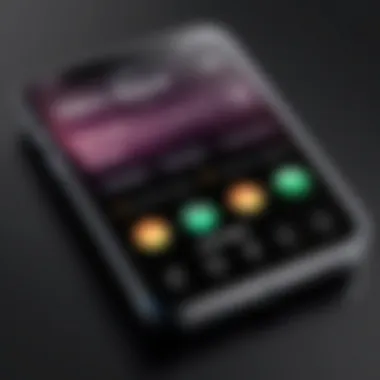
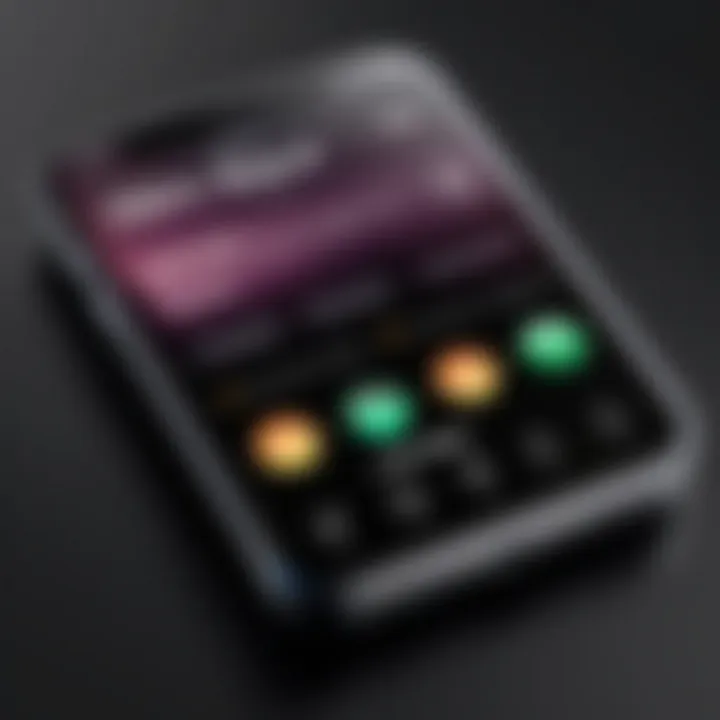
Intro
In today’s fast-paced world, your alarm tone can set the mood for your entire day. Instead of waking up to the same old, monotonous beeping sound, why not kickstart your morning with a song that resonates with you? This guide aims to help iPhone users download their favorite tracks for use as alarm tones, ensuring a personalized wake-up experience. With a bit of know-how, you can transition from generic alerts to upbeat melodies that inspire. Let's delve into the methods available to make that happen.
Overview of the Technology
Alarm features on smartphones have come a long way since the inception of mobile devices. With the advancement of technology, particularly on the iPhone, users have a multitude of options to tailor their alarm settings.
Key Specifications
- Format Compatibility: iPhone supports various audio formats for alarm tones, notably .m4a and .mp3, ensuring that you can find nearly any song suitable for your needs.
- Integration with iOS: This allows seamless access to downloaded songs through the alarm settings directly, without the need for third-party apps in many cases.
- User-Friendly Interface: Accessibility is key. Navigating through your music library to select an alarm tone is straightforward and intuitive.
Unique Selling Points
- Personalization: Having a song play as your alarm gives a personalized touch that cannot be matched by default sounds.
- Variety: You are not limited to a handful of tones; your entire music library is at your disposal.
- Quality: The sound quality of songs is much higher than typical alarm sounds. This enhances the overall experience, making mornings feel a bit more special.
"An alarm should resonate with who you are, making each morning a fresh start, not a jarring interruption."
Design and Build Quality
While this section typically refers to physical devices, in the realm of iPhone alarm configurations, it's about how the software is designed to enhance user experience as much as the hardware.
Material Used
Here, one can argue the material refers to the music files themselves. Digital sound files are constructed through various software ecosystems, ensuring they are clean, clear, and ready for playback, without any degradation in quality.
Ergonomics and Usability
- Set-Up Process: Adding a song to your alarm is simple: you go into the clock app, set the alarm, and choose a song from your library. This ease of use is vital for a seamless morning routine.
- Customization Options: Users can repeat alarms, adjust volume levels, and select the start time with just a few taps. Making this maneuvering user-friendly is the hallmark of Apple design principles.
- Compatibility Considerations: Users often need to ensure that the song is downloaded properly from a service like iTunes or another site, ensuring the format will work seamlessly when selected.
In embracing these aspects, users not only enhance their awakening experience but also engage deeply with their favorite music tracks—making each morning uniquely their own.
Prelude
In today's fast-paced world, the way we wake up can significantly affect our day. The traditional alarm sound can sometimes feel jarring or uninspiring. That's where the customization of alarm tones comes into play, specifically on an iPhone. By using personal favorite songs as alarm tones, users can begin their mornings on a more positive note, infusing a bit of their personality into what is often a routine task.
Personalizing alarm sounds on your iPhone offers a number of benefits. For one, it can create an emotional connection to your waking moments. Instead of the monotonous beep-beep of a standard alarm, waking up to a beloved tune can evoke feelings of joy and motivation. Moreover, this small change can help foster a better mood right from the start of the day.
However, there are some key considerations to keep in mind. Not all songs can be directly set as alarm tones due to format restrictions or licensing issues. Additionally, moving songs from various sources, such as Apple Music, iTunes Store, or third-party services, involves different steps and compatibility considerations. It's crucial to ensure that the songs you want to use are correctly downloaded and accessible within your iPhone's settings.
This guide aims to provide a comprehensive understanding of how to download and set up your favorite songs as alarm tones on an iPhone, considering various methods and the technical know-how required. Whether you're a tech-savvy individual or someone just diving into the world of customization, this rundown delivers detailed instructions and insights. By following it, you’ll be equipped to transform your morning routine into something genuinely pleasant.
Understanding iPhone Alarm Tones
Setting an alarm on an iPhone isn’t just about the beep-beep sound that wakes you up; it encompasses a deeper layer of personal experience. Alarm tones play a pivotal role in how we greet the day, often influencing our mood before we even get out of bed. Understanding iPhone alarm tones involves knowing the types of sounds available and the significance of customizing them.
The choice of alarm tone can greatly affect your mornings. For some, waking up to a gentle chime can set a peaceful tone for the day, while others might prefer something more invigorating to kickstart their routine. Alarm tones serve not just as an auditory cue but can also evoke memories and feelings, linking a specific song or sound to moments in time.
In this section, let’s dive into the different types of alarm tones and the reasons behind customizing them. It's essential to grasp these concepts to enhance a seemingly simple task into something that resonates deeply with personal preferences.
Types of Alarm Tones
From the latest pop hits to classical symphonies, the types of alarm tones available on your iPhone can be as varied as your playlist. Here’s a rundown:
- Pre-installed tones: iPhones come equipped with a selection of default tones. Ranging from simple digital sounds to natural sounds of birds chirping, these tones offer a variety of waking experiences.
- Purchased music: If the built-in options don’t suit your fancy, you can use songs purchased from the iTunes Store. It allows for a more personal touch, as you can wake up to your favorite anthems or heartfelt ballads.
- Apple Music tunes: With an active subscription, you can opt for any track in your library as an alarm tone. This gives you the flexibility to constantly switch things up and keep your morning routine fresh.
- Custom ringtones: For those who dabble in creativity, there’s always the option of creating custom ringtones. With a few audio editing skills, you can carve out the best parts of a song and make them your wakeup call.
Tip: Experiment with different tones to find what makes your mornings feel less of a chore and more of a celebration.
Each type has its own set of advantages, and understanding them allows you to curate a personalized alarm experience that fits your lifestyle.
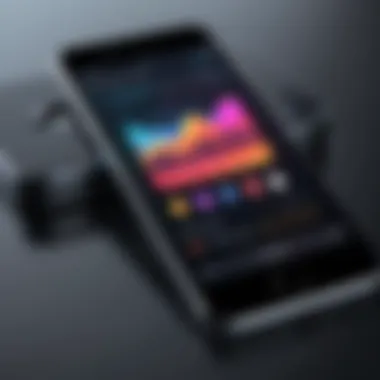
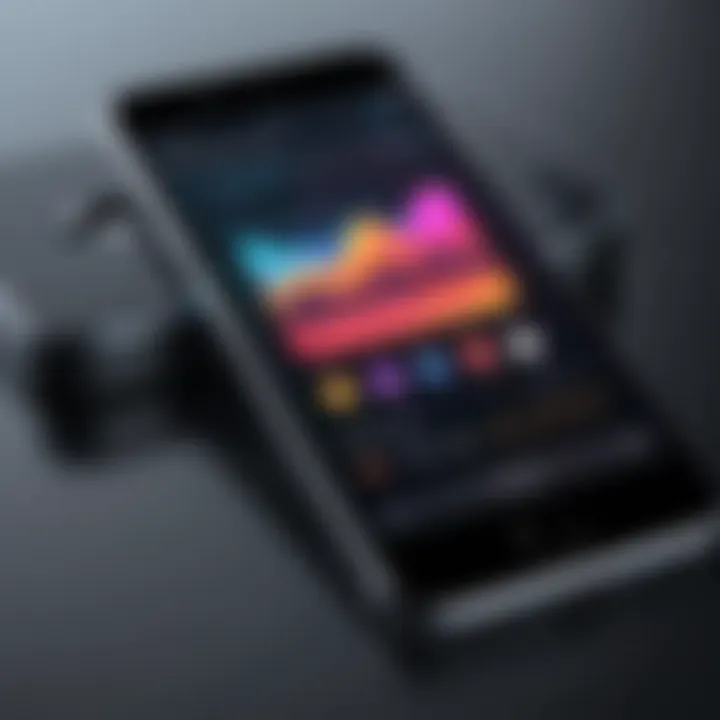
Why Customize Alarm Tones
Customization is key in almost every aspect of our lives, so why should alarm tones be any different? Personalizing your alarm tone goes beyond aesthetics; it encompasses psychological impacts, emotional attachments, and even productivity.
- Emotional connection: A specific song can evoke a certain memory or feeling, making your wake-up experience more meaningful. Perhaps a loved one gifted it to you, or it reminds you of a happy occasion.
- Motivation and mood: As mentioned earlier, the tone you choose can have a significant impact on your mood. A rousing tune can pump you up for a productive day, while a softer melody might help you wake up gradually, making those early mornings a tad more bearable.
- Reducing the shock: Waking up to an obnoxious beep can lead to alarm fatigue. Personalizing the sound can be a gentle way to arouse without jolting you out of sleep.
Retrieving Songs for Alarms
Finding the right songs to use as alarm tones can be quite the journey, and it's not just about picking your favorite track. Getting this right can influence how your day starts. When the alarm rings, you want it to be motivating but not jarring. Therefore, understanding how to retrieve songs for alarms is essential. This section dives into various methods available, focusing on the benefits and conditions of each.
Purchasing Music from iTunes Store
The iTunes Store is a classic go-to spot for purchasing music. This platform has a vast library, so it's pretty likely you'll find your preferred song. A big plus is that the tracks bought here are formatted specifically for Apple devices, ensuring seamless integration with your iPhone's alarm settings.
When you buy music from iTunes, keep these things in mind:
- Quality Assurance: Tracks are usually of high quality, which means they sound good, especially if you're a bit of an audiophile.
- Ownership Clarity: Once you purchase it, that song is yours and can be used without worry about licensing issues.
To buy songs, simply navigate to the iTunes Store app on your iPhone, search for your desired track, and click on the purchase button. After the payment, the song automatically syncs with your iTunes library, ready to be used for your alarms.
Using Music from Apple Music
If you're subscribed to Apple Music, you have another option at your fingertips. This streaming service not only allows you to listen to a vast array of songs but also lets you add them to your library. However, there are some caveats when it comes to using these tracks as alarm tones.
Generally, songs downloaded from Apple Music are protected by DRM (Digital Rights Management). This means they can't be used freely outside of the app. Nevertheless, there's a workaround: create a playlist of your preferred tracks within the app, then set the alarm tone to a song from that list.
Key Points:
- Make sure to download the song for offline listening.
- Be aware of the restrictions relating to the use of DRM-protected content.
Downloading from Third-Party Sources
For those who are a bit more adventurous or looking for exclusive tracks, third-party sources can provide an alternative. Websites like SoundCloud, Bandcamp, or even free music libraries offer a variety of music options. Just ensure that the files downloaded meet the required audio formats for iPhone compatibility.
Some things to consider when downloading from these sources:
- Licensing: Ensure that you have the right to use these tracks, especially if you’re downloading for a public presentation or setting.
- File Format: The song must be in a compatible format (like MP3 or AAC) to be used as an alarm tone which means, take a moment to check the compatibility settings on your iPhone.
However, this method requires a bit more due diligence to ensure you’re not running afoul of copyright issues. Make sure your selected site is trustworthy, as some corners of the internet can lead to unwanted surprises.
"Finding your preferred song to wake up to can feel like looking for a needle in a haystack, but it all starts with knowing where to look and how to get it."
In summary, retrieving songs for alarms involves various options from trusted purchases on the iTunes Store to exploring Apple Music and venturing into third-party sites. Each method has its pros and cons, but knowing the nuances helps you make better decisions to find that perfect morning tune.
Storage Requirements and Formats
When it comes to personalizing your iPhone with custom alarm sounds, understanding storage requirements and formats is crucial. iPhones, like any gadget, have limits. Knowing what kinds of files your device can utilize and how they fit into its storage can save you from unexpected headaches. If you load up too many large files, not only can your device slow down, but you may also find that your favorite tracks won't even set as alarms.
Supported Audio Formats for iPhone
To ensure that your chosen songs work seamlessly as alarm tones, it’s essential to be aware of the audio formats that the iPhone supports. Generally, iPhones are compatible with the following:
- AAC (Advanced Audio Coding): The format of choice for most downloads from the iTunes Store and Apple Music. It's efficient and maintains good quality at a smaller size.
- MP3 (MPEG Audio Layer III): A popular format that many non-Apple sources utilize. Its quality varies, but it’s widely accepted.
- WAV (Waveform Audio File Format): Known for its high quality, but these files tend to take up more space.
- AIFF (Audio Interchange File Format): Like WAV, it provides excellent sound quality, commonly used in professional settings.
Having songs in these formats ensures that you won’t run into compatibility issues when trying to set them as alarm tones.
Managing Storage for Music Files
Even if you’ve got the perfect songs downloaded, managing your music storage effectively is just as important. Here are a few tips to help keep your iPhone’s storage organized and functional, allowing you to enjoy your favorite tunes without a hitch:
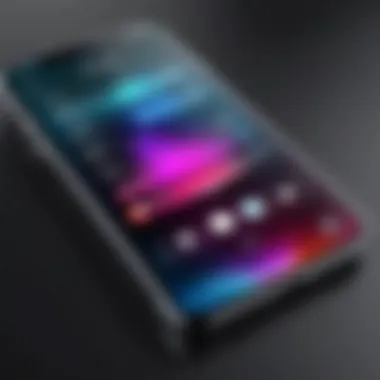
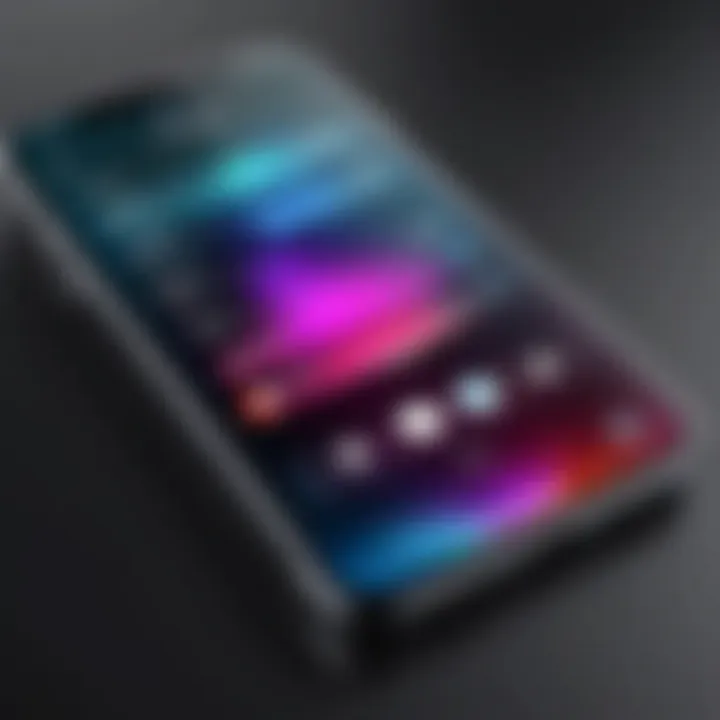
- Use iCloud: If you're reaching storage limits, iCloud offers a neat way to offload music and other files while keeping them accessible. Just remember, if you're not on Wi-Fi, you might not always have access to your songs.
- Regularly Clean Up: Periodically delete any songs and apps you no longer use. If the 2005 hits aren’t bringing you joy anymore, let them go!
- Compression Tools: If you have songs in WAV or AIFF formats, consider converting them to AAC or MP3 to save space. Apps like Audacity can help with that.
Managing storage is about more than clearing out space; it's about ensuring that everything functions smoothly. A cluttered device can lead to issues when you really need your alarm to ring out that perfect tune.
"A tidy phone is a happy phone."
By grasping both the storage requirements and the audio formats supported by your iPhone, you can guarantee a smoother experience when downloading and using songs as alarm tones.
Transferring Songs to iPhone
Transferring songs to your iPhone is a crucial step in personalizing your alarm experience. Without this transfer, your music won’t be accessible to set as alarm tones. The significance of this task is further enhanced when you consider the emotional weight a favorite song can carry, especially when awakening in the morning. Using your preferred tunes not only makes waking up a more enjoyable experience but also motivates a positive start to the day. Whether you’re an early riser or you're chasing that snooze button, having your beloved music to accompany your morning routine can truly make all the difference.
Using iTunes for Song Transfer
To kick things off, iTunes is the way many users get their songs onto their iPhones. It’s somewhat traditional yet still effective, especially considering many users have large libraries. Here’s how it goes:
- Install the latest version of iTunes on your computer.
- Connect your iPhone to the computer using a Lightning cable.
- Open iTunes, and your device should show up in the top left corner. Click on that.
- From the left sidebar, select the "Music" tab.
- You can either sync your entire library or select specific songs.
It's essential to remember, though, that syncing will overwrite existing alarms if you're not cautious. So ensure you’re backing up any previous settings or tones. Using iTunes preserves quality and ensures your files are ready to be alarm tones once transferred.
Utilizing iCloud for Music Access
Another modern approach is utilizing iCloud. This method grants you access to your songs seamlessly across all your Apple devices if set up correctly. Here’s how you can do it:
- Ensure your songs are uploaded to iCloud Music Library (requires Apple Music or iTunes Match).
- On your iPhone, open the "Settings" app.
- Scroll down and tap on "Music." The "iCloud Music Library" option needs to be enabled.
- Now, any song available in your library should be accessible.
Using iCloud makes things effortless since everything updates automatically. So whether you are at home or on the go, your songs are just a tap away. This is an excellent choice for those who prefer digital solutions without cables!
Employing Third-Party Applications
If you are looking for alternatives or perhaps have a preference for non-Apple options, third-party applications are plentiful. Apps like Spotify, YouTube Music, or Amazon Music offer their own features for transferring songs to your device. While these may not directly integrate as alarm sounds, here’s a solid approach:
- Download the app of your choice from the App Store.
- Import your preferred playlists or songs into the app.
Keep in mind that at times, you may need to use built-in sharing features or even record your preferred songs if the app does not support exporting as tones. However, if you enjoy the freedom of diverse services, utilizing these apps can bring variety to your musical library, ensuring your alarms are anything but boring.
Setting Songs as Alarm Tones
Choosing the right tone for your alarm can make all the difference in how you start your day. Setting songs as alarm tones not only breaks the monotony of traditional alerts but also brings a personal touch to your morning routine. Imagine waking up to your favorite tune or perhaps that song which gets you in the right mood for the day ahead. It’s more comforting than the standard beeping sound of alarms, which can sometimes feel like a rude awakening.
Accessing Alarm Settings on iPhone
The journey to setting a song as your alarm tone begins with navigating through your iPhone's settings. First, grab your device and follow these steps:
- Open the Clock app: This can usually be found on your home screen. An icon that resembles a clock, simple enough.
- Select the Alarm tab: Look over the bottom of the app screen; you’ll see options like World Clock, Alarm, Stopwatch, and Timer. Tap on Alarm.
- Edit or Add Alarm: You can either edit an existing alarm by tapping "Edit" in the top left corner or create a new one by tapping the “+” button.
- Choose Sound: This is the critical point where you can select a song. Tap on "Sound," and you’ll come upon a list of default options. At the top, there’s a ‘Songs’ section, which is where your downloaded tracks will appear.
Navigating these options smoothly may take some getting used to if you’re a new user. However, the interface is designed to be intuitive, so you'll find it pretty much user-friendly once you familiarize yourself.
Selecting Your Downloaded Song
After accessing the alarm sound settings, it’s time to select the song that will wake you up each morning. Here's how to do it:
- Browse Through Your Music: Once you tap on Sound, scroll through the list of available songs. If you’ve followed the previous sections about downloading tunes, your selected songs should show up here, visible and ready for selection.
- Tap Your Favorite: When you find that perfect song which tickles your fancy, simply tap on it. A preview will play, allowing you to decide if this is indeed your preferred wake-up call.
- Save Your Selection: Hit ‘Back’ to return to the previous screen once you’ve confirmed your choice, then tap Save in the upper right corner. This ensures that every time that alarm rings, the chosen music accompanies it.
"A personalized alarm tone sets the mood for your day, adding a slice of joy to your morning routine."
Troubleshooting Common Issues
The path to customizing alarm sounds on an iPhone is littered with various hurdles, and understanding how to troubleshoot these common issues can save users both time and annoyance. This section highlights crucial elements that may cause complications and presents sensible solutions to enhance the overall experience of setting personalized alarms. Whether you're a newbie or tech-savvy, knowing how to tackle these issues can be invaluable, as it ensures that your alarms function precisely as intended.
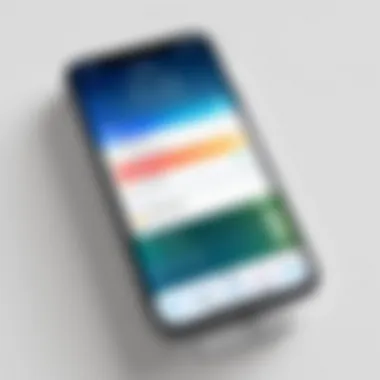
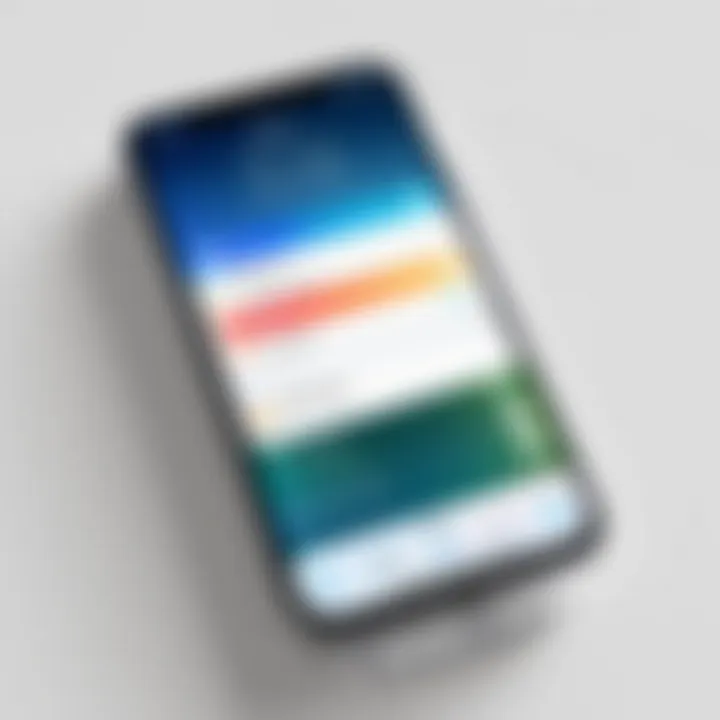
Identifying problems early on helps to streamline your morning routine, minimizing disruptions that arise from malfunctioning alarms. In the heat of a busy day, a well-timed alarm can be the difference between a calm start and a rushed morning.
Songs Not Appearing in Alarm List
One of the more frustrating issues encountered is when downloaded songs simply don’t show up in the alarm list. Imagine having meticulously chosen your favorite track to wake up to, only for it to be invisible when you’re setting the alarm. This can often stem from a few key factors:
- Format compatibility: Your selected song may not be in a compatible audio format. iPhones typically support MP3, AAC, WAV, and other common formats. Check if the track is indeed a playable format on your iPhone.
- Library syncing: If you downloaded the song from a service like Apple Music, ensure your music library is fully synced with your iPhone. Sometimes it takes a moment for everything to align perfectly.
- Recent downloads: Songs downloaded recently may not appear immediately. If you’ve just added a new track, give it a moment and refresh the music app.
To address these issues, a simple workaround is to navigate to the Music app, search for your song, and play it once. This often jogs the system into recognizing the track in the alarm settings. If that doesn’t work, give an iPhone restart a whirl before trying again. A quick reboot can sometimes refresh the system caches, which might bring the missing song back into view.
Audio Quality Concerns
Another common frustration could be related to audio quality. While it's thrilling to wake up to that song you can’t get out of your head, the quality of playback may not be as expected. Factors contributing to poor audio quality can include:
- Poor source quality: If you downloaded a song from a less-than-reputable source, the sound might be subpar. Opt for music from recognized platforms like iTunes or reputable streaming services.
- Compression artifacts: Some songs may have been compressed too much during download, affecting clarity and depth of sound. Check if a high-quality version exists.
- Output settings: Issues can also arise from the output settings on your device. Make sure there are no equalizer settings turned up way too high, which might distort audio playback through your alarm.
To improve the experience, consider testing the song through your regular music player. If it sounds good in other contexts, then there may be an issue with alarm-specific settings.
"A good alarm tone can make all the difference in the world; it can gently wake you up or jolt you out of a pleasant dream."
Paying attention to these audio settings will help you ensure that your chosen songs deliver the quality and experience you desire to kick things off each morning.
Maintaining the integrity of both your song visibility and playback experience is crucial to a seamless alarm-setting routine. Being aware of these common pitfalls allows users to enjoy their personalized soundscape every morning with minimal hassle.
Exploring Alternative Options
In the realm of customizing alarms on your iPhone, exploring alternative options can significantly enhance your experience. Not everyone wants the standard dinging sounds or preloaded tones, which can quickly become monotonous. Instead, the chance to personalize your alarms with unique ringtones or dedicated applications adds a layer of individuality to your wake-up routine. The beauty of these options lies in their adaptability. You don’t just settle for what comes with the phone; you create an alarm that resonates with your vibe.
When considering the alternatives, one should think about a few specific elements:
- Variety: Using unique ringtones allows for a wide selection that wouldn't typically be found in the iPhone's default settings. The essence here is to awaken to a sound that energizes you rather than annoys.
- Customization: Dedicated alarm apps can offer a plethora of features that go beyond basic functionality. From gradual volume increasing to breathe-easy wake up call settings, these apps keep your morning routine fresh and dynamic.
- User Experience: The tactile experience of using an app designed for alarms creates a more engaging interface. Users can choose their preferred settings with ease, tailoring every detail from snooze duration to the actual sound that jolts them from slumber.
The consideration of alternative options not only diversifies the sounds you wake up to but fundamentally transforms how you interact with your mornings.
Using Ringtones as Alarm Sounds
The flexibility to use ringtones as alarm sounds on your iPhone unlocks a treasure trove of auditory possibilities. Unlike the limited selection you might find in the settings, ringtones can include snippets from popular songs, quirky sound effects, or anything else from your personal library. It’s like crafting a musical breakfast that suits your style, promising a start to the day that might just make early mornings feel less daunting.
To use ringtones for your alarm, the process is straightforward:
- Purchase or Download a Ringtone: Whether you’ve bought a ringtone via the iTunes Store or downloaded one from a third-party site, it’s best to ensure it’s compatible (more on formats below).
- Set Your Alarm: Go to Clock > Alarm, tap Edit, and then on select the alarm you want to customize.
- Choose Your Ringtone: Scroll through the available options, and select the ringtone you’ve downloaded or purchased.
This method injects personality into your morning signals and allows you to wake to songs that motivate or even remind you of a cherished moment.
Dedicated Alarm Apps
For those who demand more functionality and personalization from their alarms, dedicated alarm apps are worth a look. These apps often come packed with features that standard iPhone settings cannot match. Ease of use is often complemented by innovative mechanics, making sure you don’t hit snooze for the umpteenth time.
Some standout features typically found in these applications include:
- Gradual Wake-Up: Many apps gradually increase volume, gently coaxing you from your slumber rather than shocking you into consciousness. It’s soothing and makes mornings feel more human.
- Multiple Alarms: Instead of just one alarm, some apps allow you to set multiple alarms for different times, accommodating those who need varied schedules on different days.
- Sound Options: From nature sounds to soothing music playlists, the variety keeps things fresh. No need to get stuck using the same alarm sound for months on end.
- Personalized Dismiss Options: Some apps require you to solve puzzles or perform tasks before turning off the alarm. This can be a game-changer for the heavy sleepers who tend to drift right through a regular alarm.
The choice to utilize dedicated alarm apps opens a doorway to innovative functionality. They bridge the gap between music, practicality, and user engagement, aligned with modern lifestyles that constantly seek personalization.
In a world where mornings often feel rushed and chaotic, take the time to choose how you wake up. A custom alarm sound or a more functional app can make all the difference.
Culmination
Navigating the process of downloading and setting specific songs as alarms provides several benefits. First, using music that resonates personally can create a positive psychological impact. Instead of jarring buzzers or chimes, a beloved song can instill a sense of calm or even excitement as you start the day.
Moreover, understanding the specifics, including storage formats, methods for transferring songs, and troubleshooting common issues, reflects a broader appreciation for technology. This knowledge empowers users to take control of their devices, ensuring a tailored experience that aligns with personal preferences.
Here are a few considerations that one should keep in mind:
- Compatibility: Always check if your downloaded music files are in a format that the iPhone recognizes.
- Storage: Monitor your device's storage to prevent slow performance when adding music files.
- Legal Sources: Ensure that you're obtaining music from authorized platforms to avoid copyright issues.
In essence, this article encapsulates the how-to and why of using songs for alarms on iPhone, serving both utility and enjoyment. A well-chosen alarm song might just be what you need to set a motivated tone for your day ahead.







